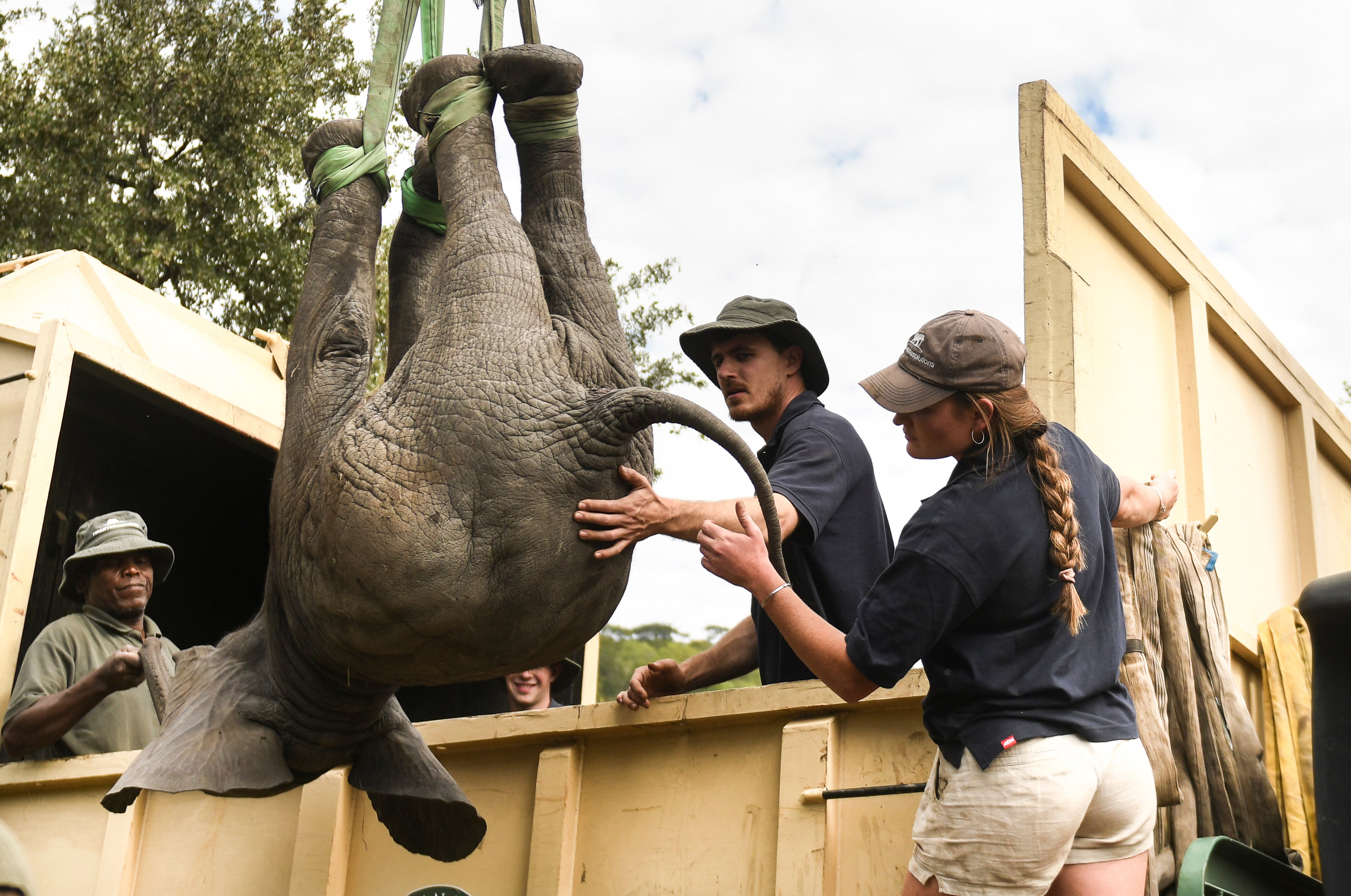Drought forces Zimbabwe to move 2,500 animals to new reserve
Elephants, lions, and giraffes are being relocated as climate crisis replaces poaching as the biggest threat to wildlife

Zimbabwe is moving more than 2,500 wild animals from a southern reserve to one in the north to rescue them from drought.
About 400 elephants, 2,000 impalas, 70 giraffes, 50 buffaloes, 50 wildebeest, 50 zebras, 50 elands, 10 lions, and a pack of 10 wild dogs are among the animals being moved more than 400 miles from the Save Valley Conservancy to three conservancies in the north: Sapi, Matusadona and Chizarira.
Project Rewild Zambezi – one of southern Africa’s biggest live animal capture and translocation exercises – is moving the animals to an area in the Zambezi River valley to rebuild the wildlife populations there.
It is the first time in 60 years that Zimbabwe has embarked on such a mass internal movement of wildlife.
Between 1958 and 1964, when the country was white minority-ruled Rhodesia, more than 5,000 animals were moved as part of Operation Noah. Animals were rescued from rising water caused by the construction of a massive hydroelectric dam on the Zambezi River that created one of the world’s largest man-made lakes, Lake Kariba.
This time it is the lack of water that has made it necessary to move wildlife as their habitat has become parched by prolonged drought, according to Tinashe Farawo, spokesperson for the Zimbabwe National Parks and Wildlife Management Authority.
The agency issued permits to allow the animals to be moved to avert “a disaster”, he said.
“We are doing this to relieve pressure. For years we have fought poaching and just as we are winning that war, climate change has emerged as the biggest threat to our wildlife,” Mr Farawo told the Associated Press.
“Many of our parks are becoming overpopulated and there is little water or food. The animals end up destroying their own habitat, they become a danger [to] themselves and they encroach neighbouring human settlements for food, resulting in incessant conflict.”
One option would be culling to reduce the numbers of wildlife, but conservation groups argue that such killings are cruel. Zimbabwe last carried out culling in 1987, said Mr Farawo.
Across Africa, national parks that are home to species such as lions, elephants and buffaloes are increasingly threatened by below-average rainfall and new infrastructure projects. Authorities and experts say drought has seriously threatened species such as rhinos, giraffes and antelope as it reduces the amount of food available.
A recent study in South Africa’s Kruger National Park linked extreme weather events to the loss of plants and animals unable to cope with the drastic conditions and lack of water due to longer dry spells and hotter temperatures.
The mass movement is supported by the Great Plains Foundation, a non-profit group that works “to conserve and expand natural habitats in Africa through innovative conservation initiatives”.
The organisation is working with the Zimbabwe National Parks and Wildlife Management Authority, local experts, the University of Washington-Seattle’s Centre for Environmental Forensic Science and Oxford University’s Department of Zoology, according to its website.
Subscribe to Independent Premium to bookmark this article
Want to bookmark your favourite articles and stories to read or reference later? Start your Independent Premium subscription today.

Join our commenting forum
Join thought-provoking conversations, follow other Independent readers and see their replies